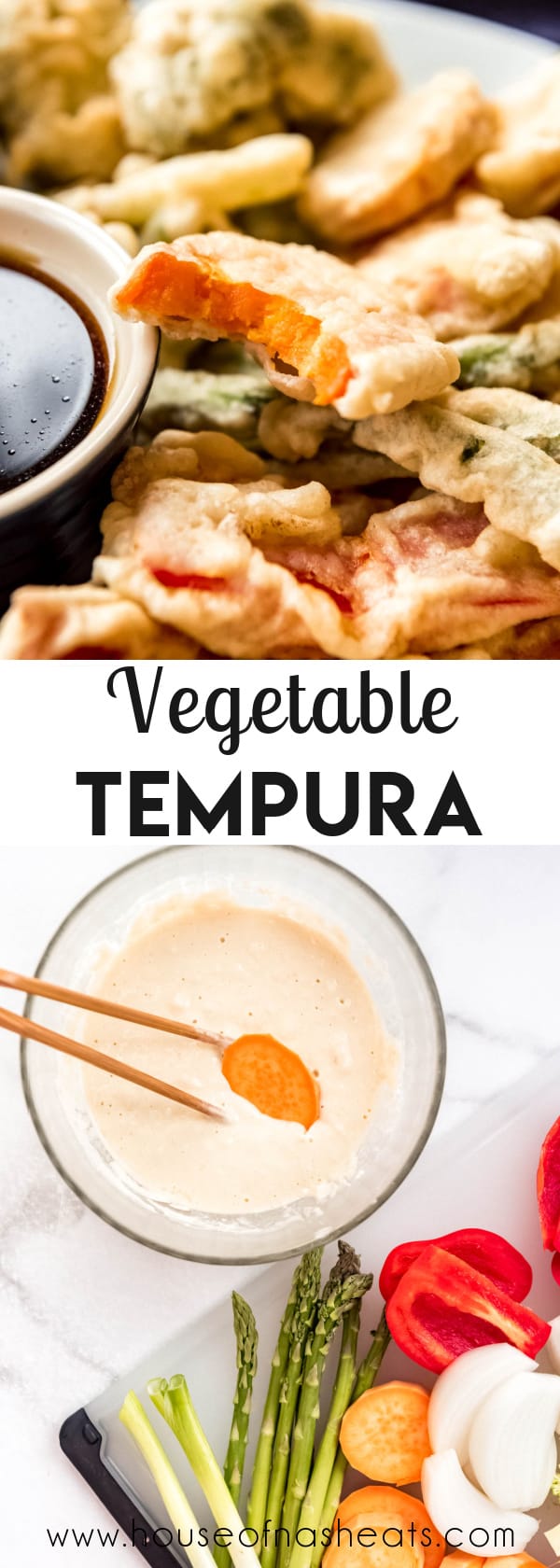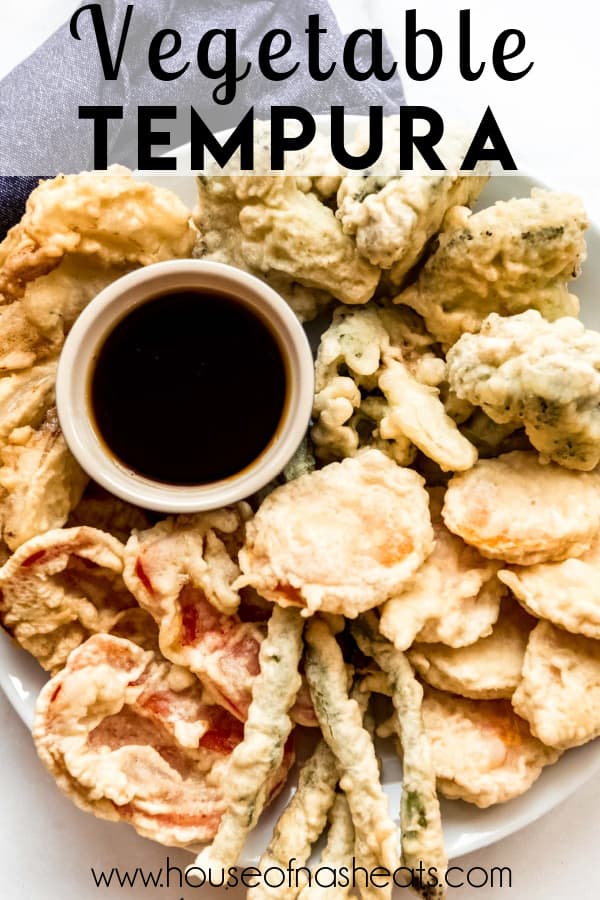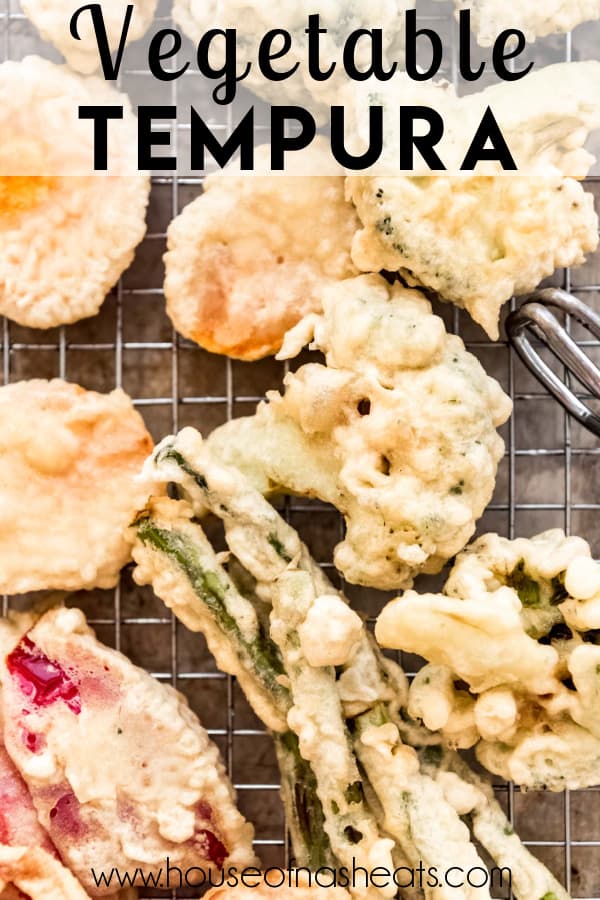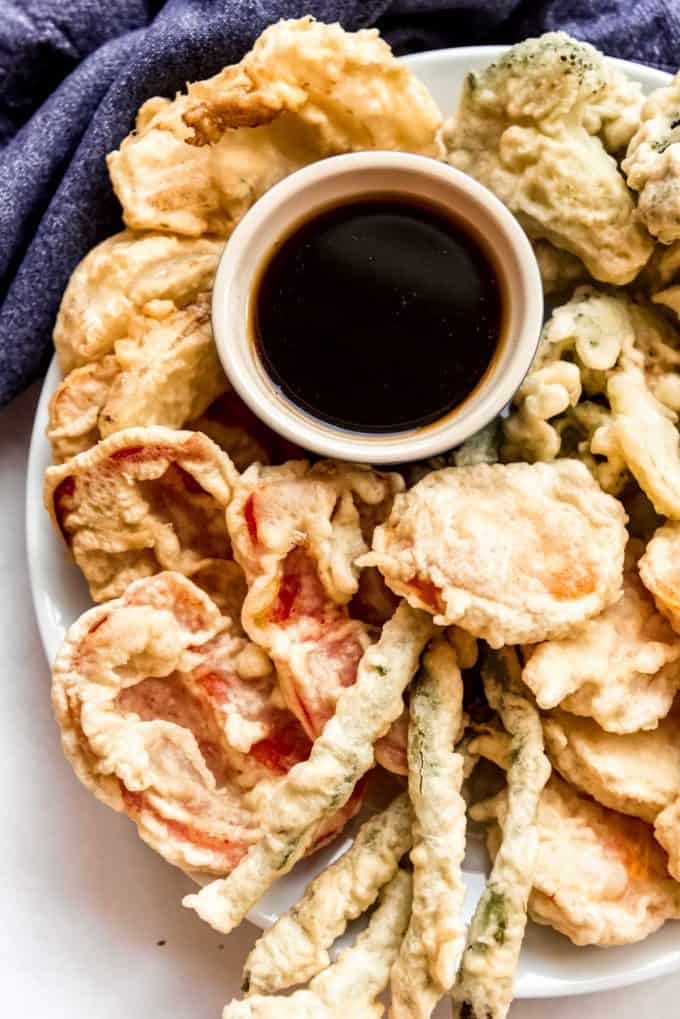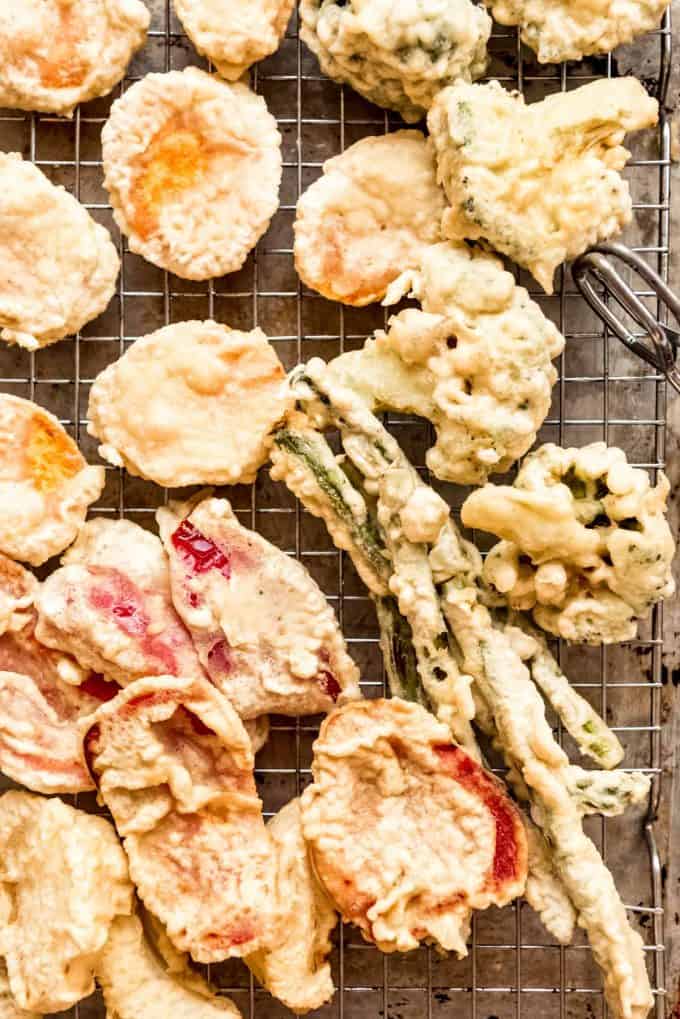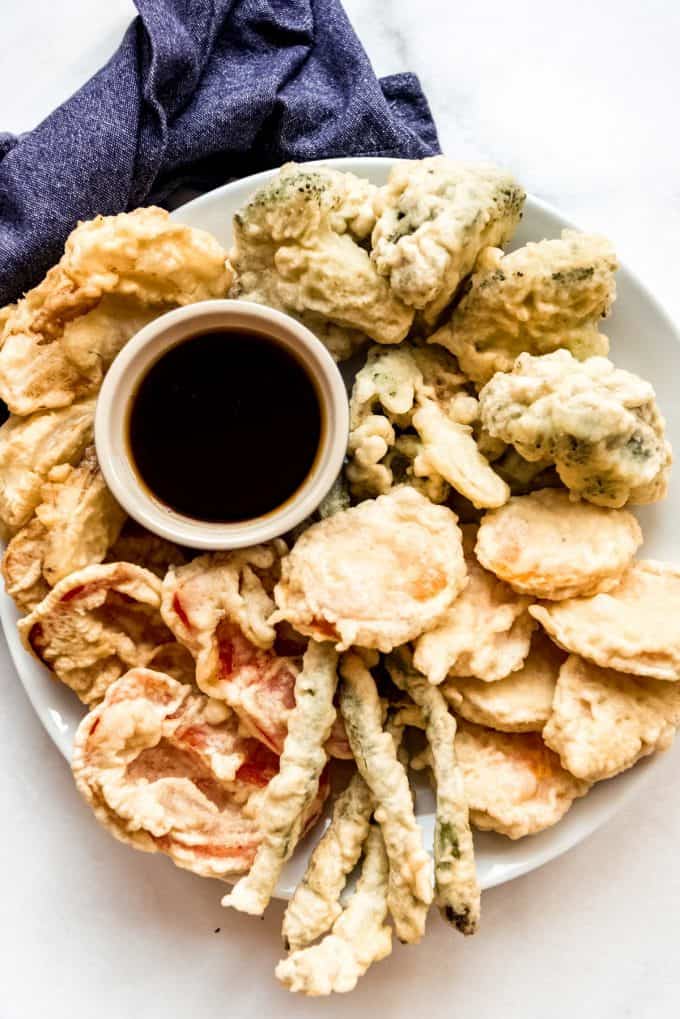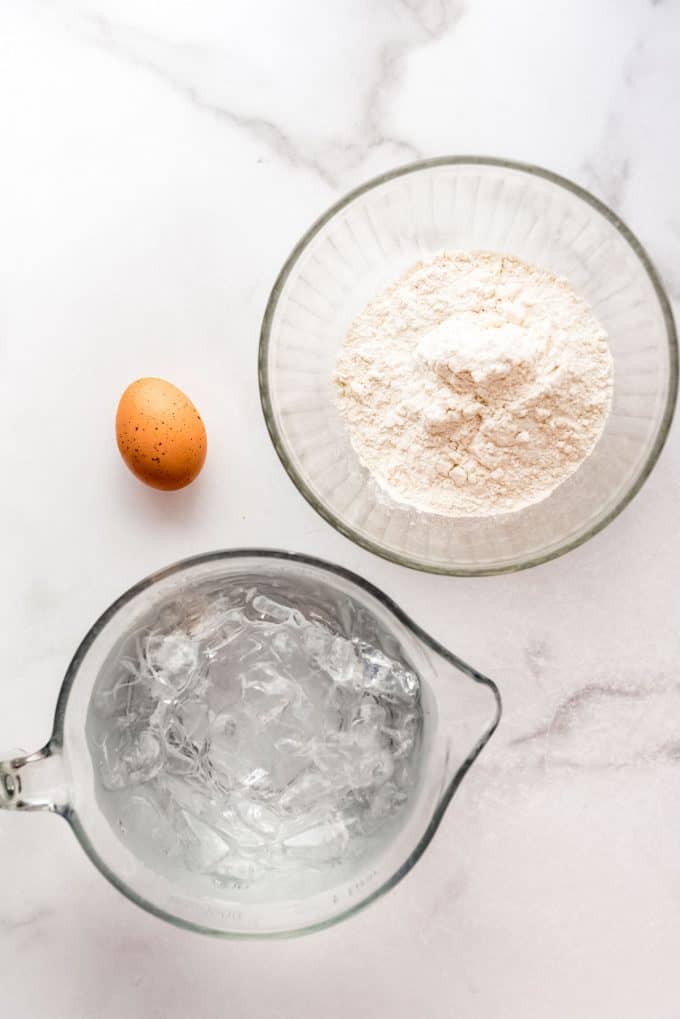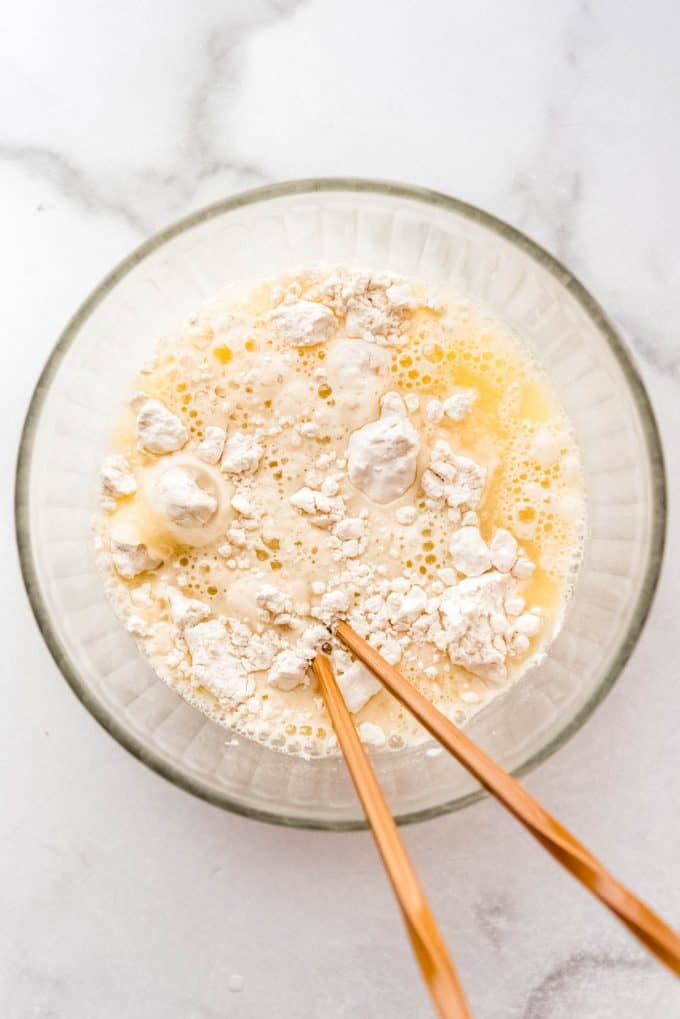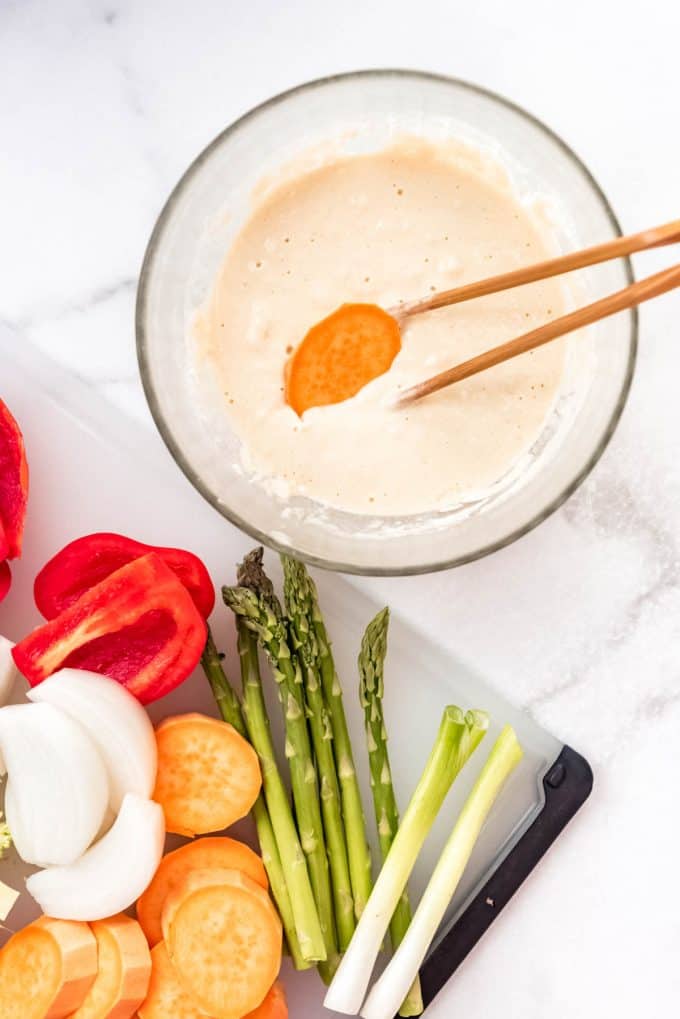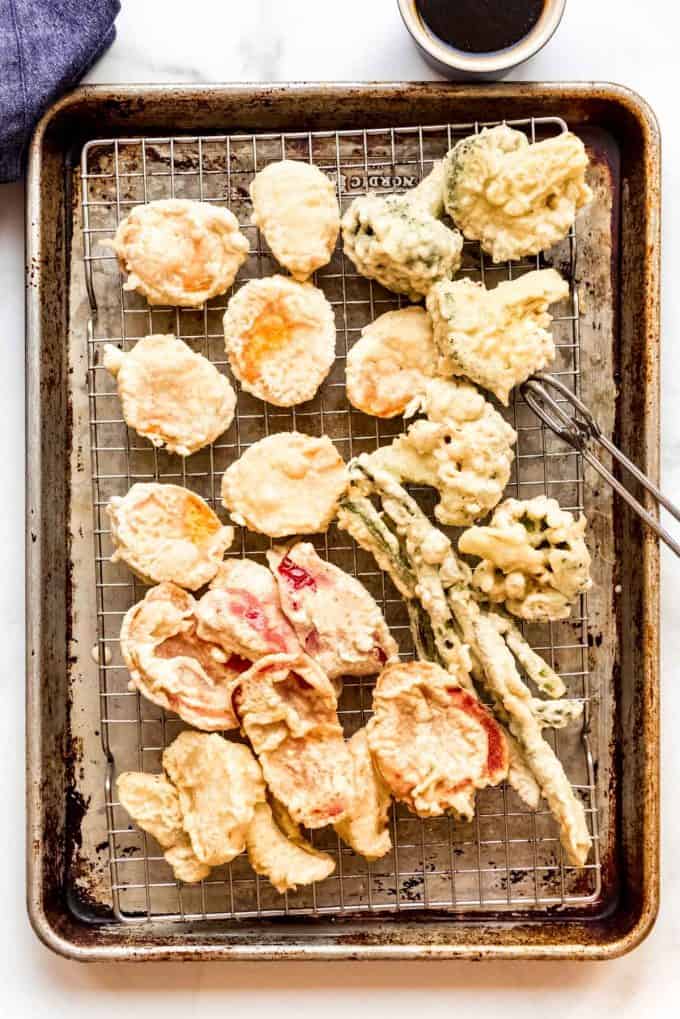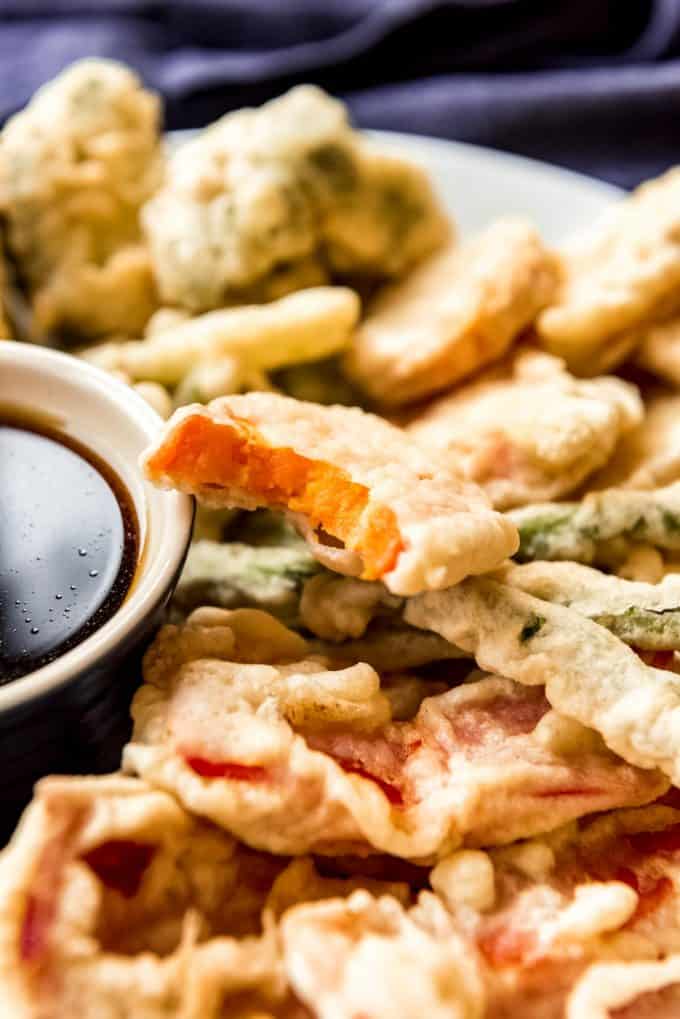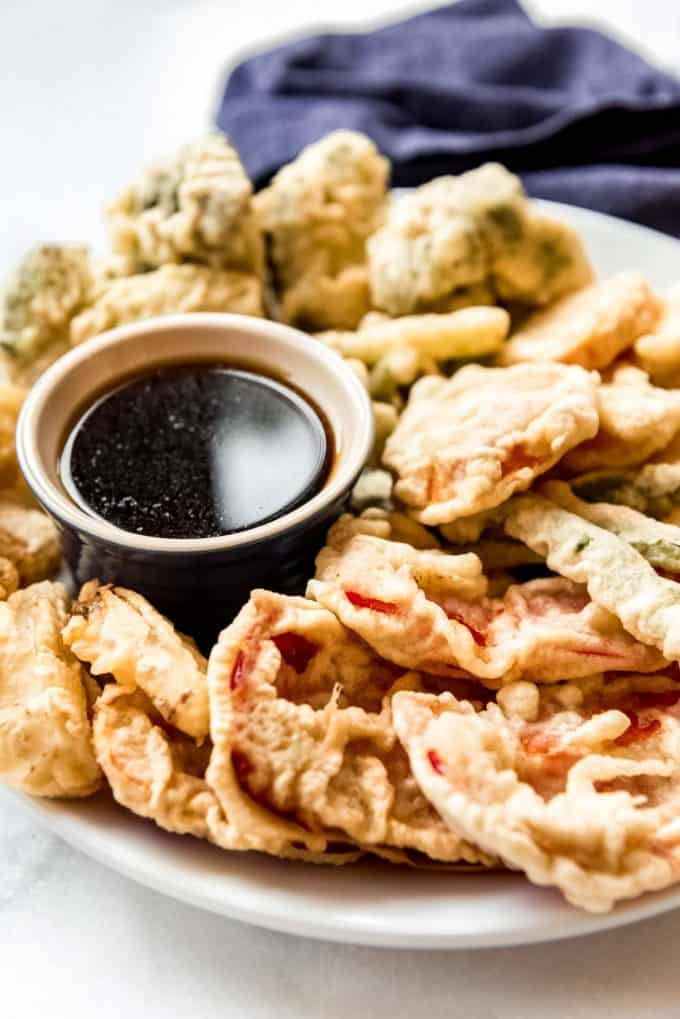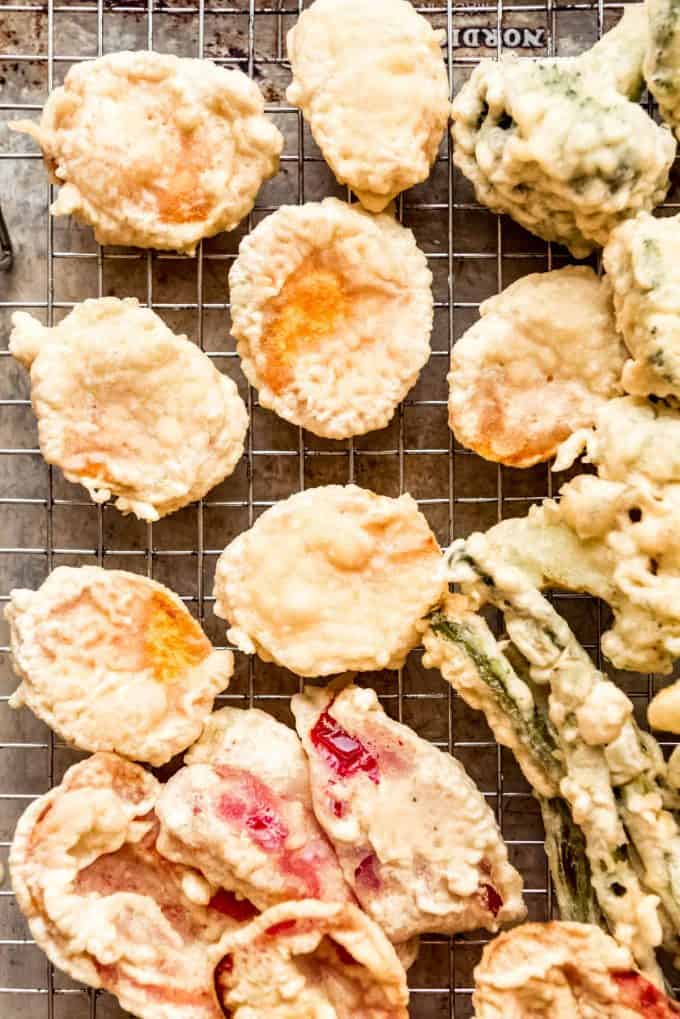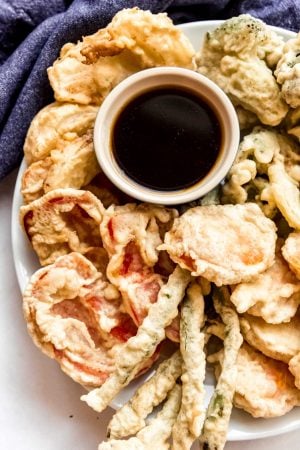You’re family will love eating vegetables when they are served tempura-style! Some of our other favorite ways of eating vegetables are Easy Oven Roasted Cauliflower, Bacon Wrapped Asparagus, and Stir-Fried Baby Bok Choy. It always feels like such a special treat whenever we get vegetable tempura when eating at a Japanese restaurant. But it’s not something I have ever even thought to make at home until I was brainstorming some of our favorite Japanese foods to make to celebrate the start of the Tokyo summer games. If you struggle with family members who are picky about eating vegetables, this is a great way to get them to really enjoy veggies and try different ones. My personal favorites are the broccoli and sweet potato, but the girls love the asparagus and red pepper, and Paul is always snatching up the tempura onion pieces. I mean, how can you really go wrong when you batter and fry something and then serve it with a savory sauce to dip it in? If you love tempura vegetables, you will likely also really enjoy my family’s Fried Yellow Squash that I make every summer with crookneck squash from the garden. The key to really good tempura vegetables is to not overwork the batter. Using cold water and mixing with chopsticks makes a big difference so the batter stays nice and light, just like at a restaurant. And there is no need to be intimidated by frying. I just used an inch or so of oil in my large cast iron skillet and it was easy peasy!
Recipe Ingredients
Vegetables: We like to have a variety of vegetables for our tempura. I usually just rummage through the crisper drawer to see what I can find so there is a selection to choose from. Bell peppers, broccoli florets, onion wedges, scallions, asparagus, green beans, mushrooms, and sliced sweet potatoes are all excellent choices though.Flour: Regular all-purpose flour is all you need.Egg: One egg helps bind the batter so it sticks well to the vegetables.Ice water: It does make a difference using ice cold water in your tempura batter.Oil: A neutral frying oil like vegetable oil will work well for frying your tempura.
How to Make Vegetable Tempura
Recipe Tips
Don’t overmix the tempura batter. Overmixing causes the gluten in the flour to develop, which results in a thicker batter instead of the light coating that is the hallmark of Japanese tempura.Use very cold water. This is another technique used to keep the batter nice and light when fried.Make sure the vegetables are all dry. If your vegetables are damp, either the batter won’t stick as well, or the coating will steam and be less crisp after frying.Use a thermometer to monitor the oil temperature. If the oil temperature is too low, the tempura will take longer to cook and absorb more of the oil. If it’s too high, the tempura will fry faster than the vegetables can cook inside. You want to try to maintain a temperature between 325 and 350 degrees, which might mean turning the heat up or down periodically.
I always do my best to research recipes from other cultures thoroughly to represent them as best I can. If this recipe is from your country or culture and you have suggestions for how I can improve its authenticity, please let me know in the comments below! It’s important to us to share beloved foods of other cultures with as much accuracy as possible, while also considering things like accessibility of ingredients and ease of preparation for most home cooks.
More Appetizer Recipes
Oven Baked Korean BBQ Chicken WingsBacon-Wrapped ScallopsYakitori (Japanese Chicken Skewers)Slow Cooker Asian Pulled Pork SlidersKorean Pancakes with Scallions (Pajeon or Pa Jun)
Let me know what you thought with a comment and rating below. You can also take a picture and tag me on Instagram @houseofnasheats or share it on the Pinterest pin so I can see.
